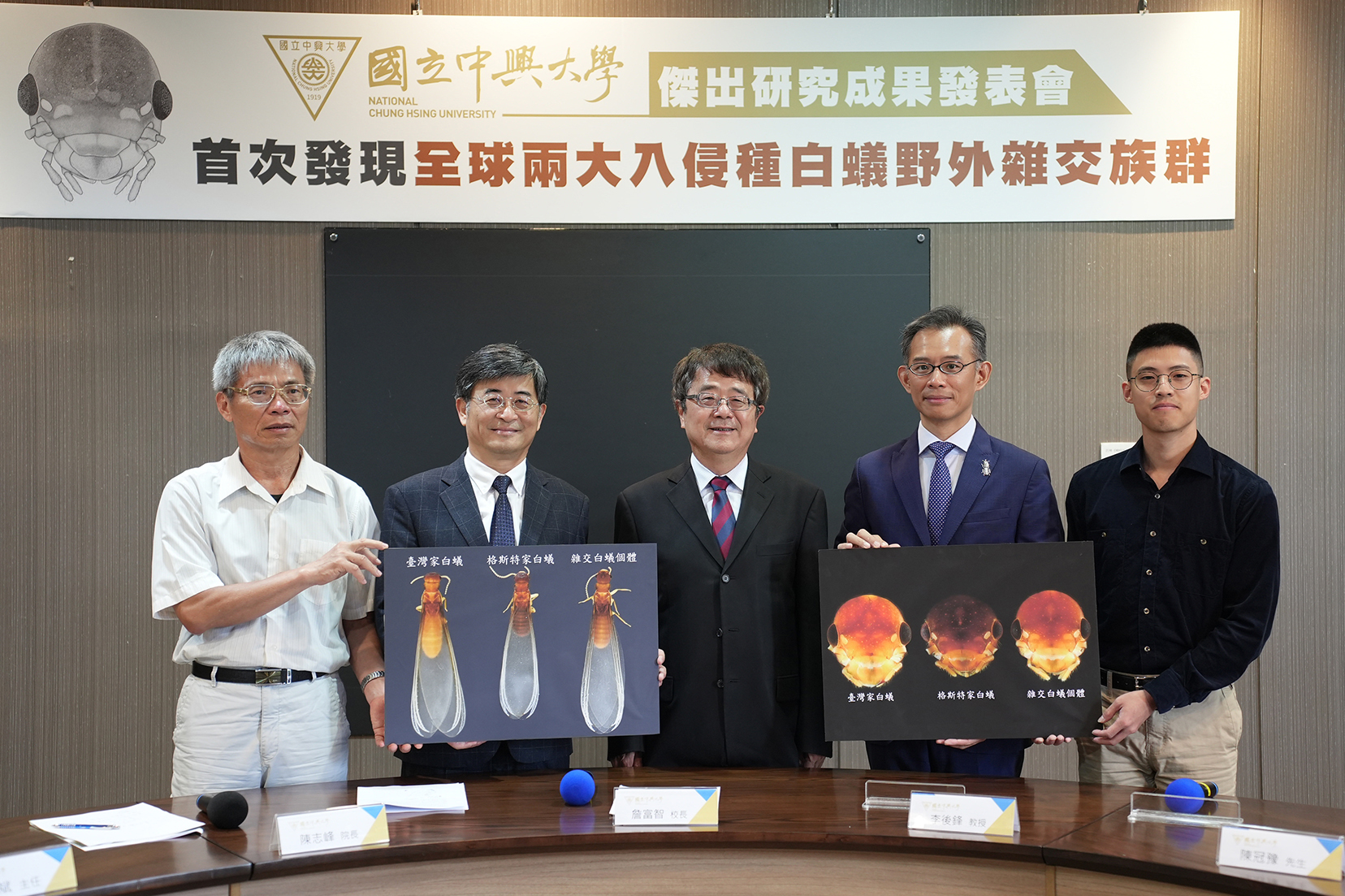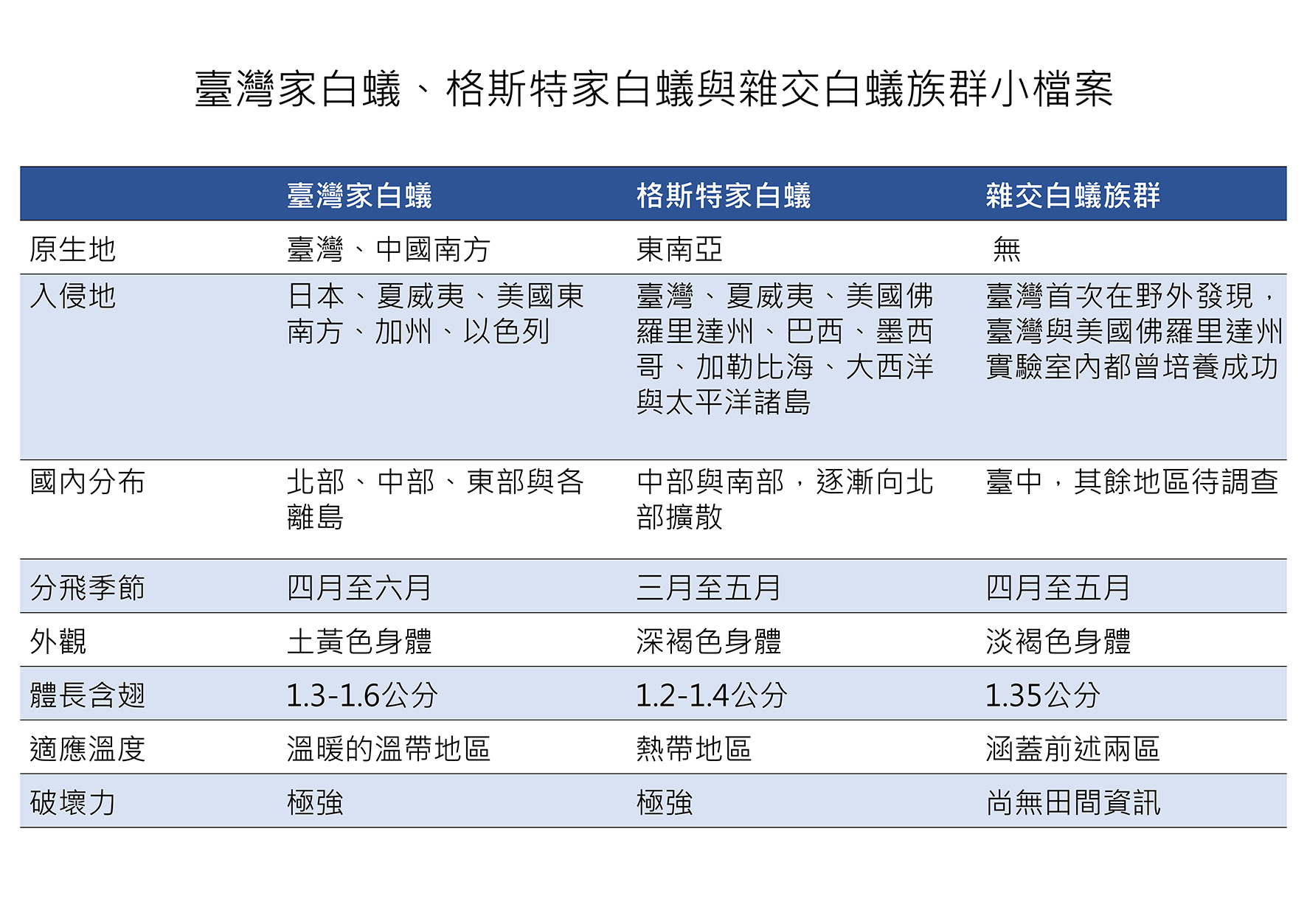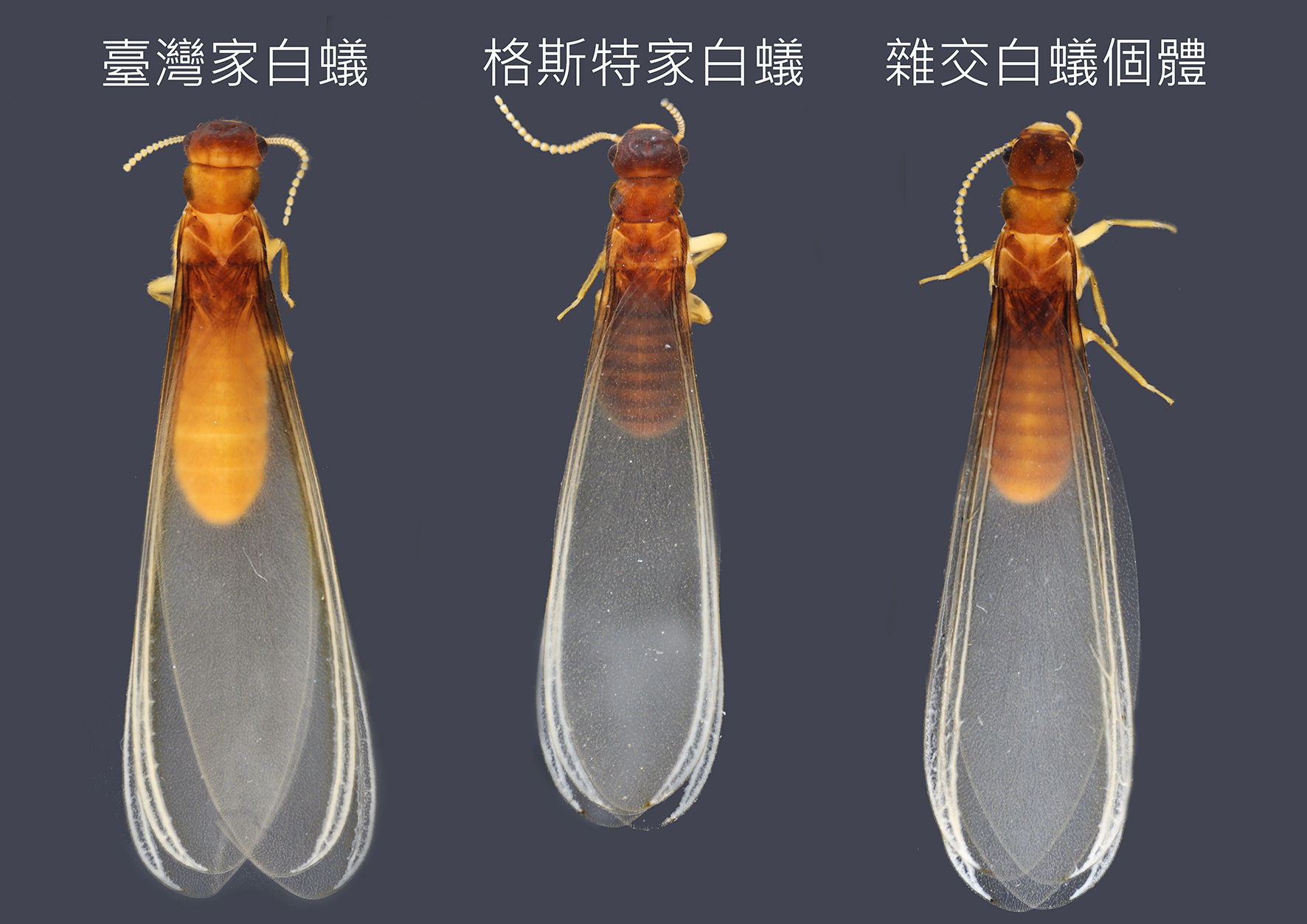【News】Breakthrough in Termite Research Confirmed by Team from National Chung Hsing University First Discovery of Hybrid Population of Two Major Invasive Termite Species Worldwide
- Category : Achievement
- Date : 2024-05-01
- views : 2094
Two major invasive termite species, the Formosan subterranean termite and the Asian subterranean termite, which are responsible for significant economic losses globally, have for the first time been found to interbreed in the wild, potentially giving rise to more destructive "super termites." This issue, which researchers worldwide have long been concerned about, has recently seen a significant breakthrough. Professor Hou-Feng Li and his research team from the Department of Entomology at National Chung Hsing University, in collaboration with Tzu Chi University and the University of Florida in the United States, have confirmed through field investigations and molecular techniques that hybridized termite populations exist in the natural environment of Taiwan.
The Formosan subterranean termite is native to Taiwan, while the Asian subterranean termite is an invasive species, first recorded in Taiwan as early as 1911. Li explained that these two species have distinct geographical distributions and would not encounter each other under natural conditions. However, due to frequent international travel and trade, termites have gradually spread to areas outside their native range, becoming invasive species and causing annual economic losses totaling billions of dollars worldwide.
Human activities have also increased the chances of encounters between the Formosan and Asian subterranean termites in the natural environment. This raises the question among termite researchers: Is hybridization possible between these two species? And would the offspring they produce pose a greater threat than purebred Formosan or Asian subterranean termites?
Li pointed out that previous laboratory experiments conducted by the University of Florida have confirmed that the two termite species can hybridize and produce offspring, which are not only more numerous than purebred termites but also exhibit greater adaptability to changes in temperature and humidity. Therefore, the question the Taiwanese team sought to answer was whether such hybridization occurs in the wild and whether hybrid termites can survive successfully in the wild.
Li explained that in Taiwan, the overlapping distribution of these two termite species has persisted for at least a hundred years, making it the most likely region in the world to observe hybrid termites in the wild. With the assistance of citizen scientists across Taiwan, the research team identified the three locations with the highest proportions of overlapping distribution of the two termite species: Taichung, Yunlin, and Chiayi. Subsequently, three teams of investigators were dispatched to conduct daily field surveys and collect termites from March to June each year between 2019 and 2021.
The collected termites were subjected to classification and identification, confirming the existence of a third group of termites with morphological differences from both the Formosan and Asian subterranean termites, namely, hybrid termites, found exclusively in Taichung. It was visually apparent that the coloration of hybrid termites ranged between that of the two parent species. Further DNA analysis revealed that hybrid termites not only survive in the wild but can also mate with either Formosan or Asian subterranean termites, producing offspring.
Li believes that the discovery of hybrid termites in Taiwan through field investigations serves not only as evidence supporting previous laboratory research findings but also represents a significant breakthrough in termite research. This collaborative study between Taiwan and the United States involved researchers from three universities, including Professor Hou-Feng Li and two students, Guan-Yu Chen and Shih-Ying Huang, from National Chung Hsing University, Assistant Professor Ching Yung-Hao and Associate Professor Ming-Der Lin from Tzu Chi University's Department of Molecular Biology and Human Genetics, and Associate Professor Thomas Chouvenc from the University of Florida. The research findings were published in the March 2024 issue of the international journal "Heredity."
Will hybrid termites pose a more serious threat and economic losses? Will there be competition for survival resources between wild hybrid termites and purebred Formosan and Asian subterranean termites? Further long-term observation and research are needed to find effective strategies. Li believes that the public need not panic excessively, but the participation of more citizens as citizen scientists in collecting termite samples will provide the research team with more comprehensive data, allowing them to better understand the dynamics of hybrid termites, unravel more mysteries, and mitigate the harm caused by termites.


